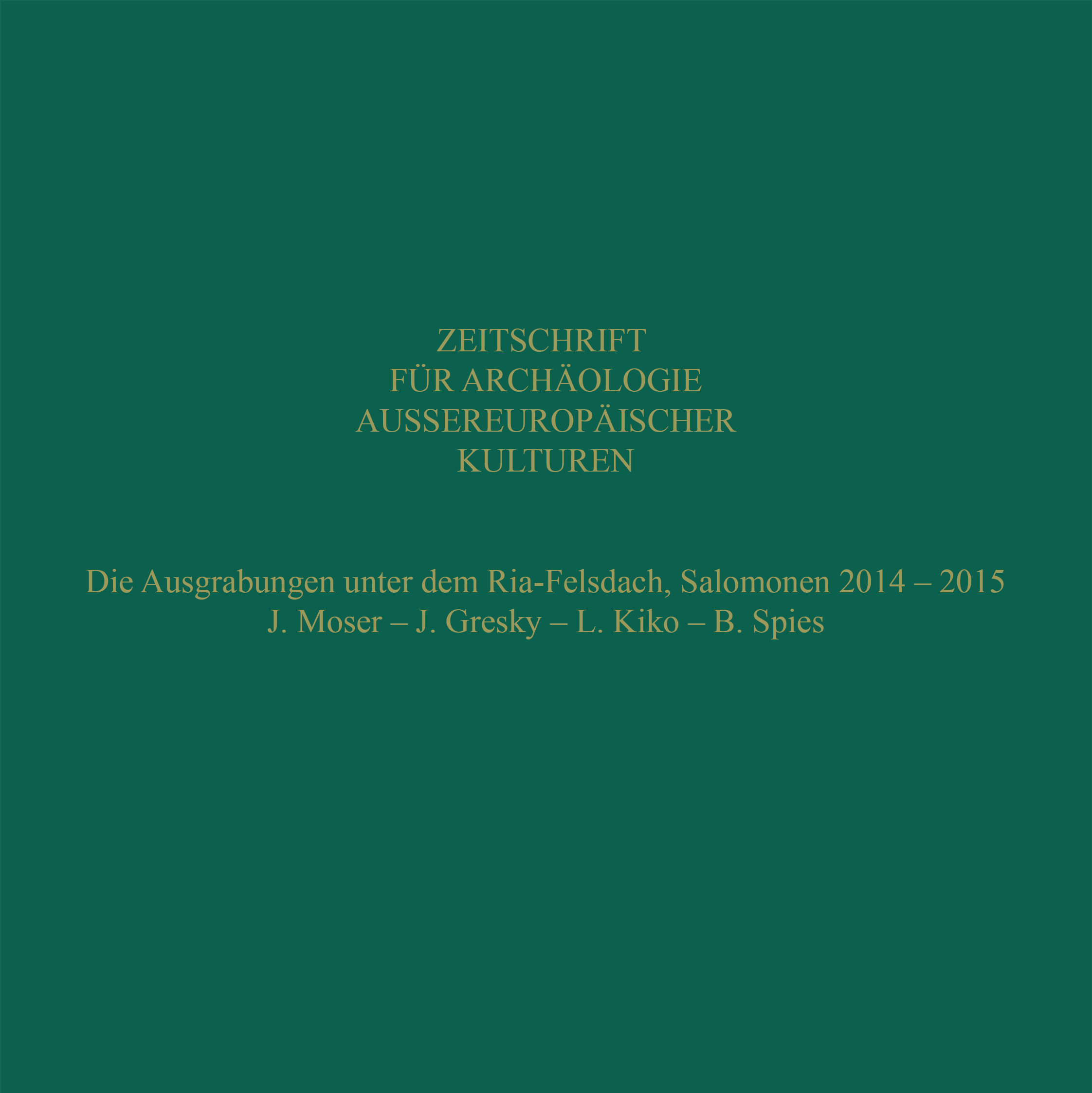Die Ausgrabungen unter dem Ria-Felsdach, Salomonen 2014 – 2015
https://doi.org/10.34780/e796-n5y4
Abstract
The Excavation at ‘Ria-rockshelter’, Solomon Islands 2014–2015. The dwelling site and burial place ‚Ria-rockshelter‘. The archaeological investigations at the ‘Ria-rockshelter’ within the research project “Settlement History of Melanesia – Prehistory of the Solomon Islands” are conducted in close cooperation with the National Museum Honiara and the Ministry of Culture and Tourism, Solomon Islands. The rock overhang ‘Ria’ is located in the province East Are Are in southern Malaita and was formed by an isolated natural limestone cliff and can serve as a shelter for one to two families. The archaeological potential of the shelter was suspected during a survey in the region in 2011 and finally confirmed through a first test sounding in 2013. The excavations continued in 2014 and 2015 and revealed new results. As primary raw material sources the limestone formations are bearing a quantity of embedded chert nodules waiting to be quarried out in suitable pieces for further working and the final tool production. As secondary raw material source the gravel bed of the small river by passing the ‘Ria-rockshelter’ contains pebbles and boulders made from chert. The raw material was brought as manuports to the site for further usage. The ‘Ria-rockshelter’ shows evidences of human presence in prehistoric times. Excavations under the rockshelter disclosed cultural deposits and features and a large collection of knapped stone tools, shells and faunal remains. In the upper layers besides of several fi re places a pavement made from accurately placed pebbles (hau poro) – all are affected of heat – was unearthed and indicating an earth oven (umu). The set of lithic implements consists of a great variety of flake adzes, serrated and denticulated pieces, unmodified flakes and cores. As ornaments diverse shell pectoral pendants were found. In the rear of the shelter two extended supine burials were discovered under a pebble pavement. During the excavation in 2015 remains of a third individual, an infant, came to light. The human remains can open the possibility for anthropological and genetic analysis. The latest radiocarbon dating from the 2014 and 2015 campaign showed the following results: 527 BP ± 40 (Labcode Erl-19176, carbon from quadrant Q8, layer 2). 601 ± 35 BP (Labcode Erl-20176; carbon from quadrant P8, layer 3). 140 ± 30 BP (Labcode Poz-80516; carbon from quadrant P8, layer 4b). 396 ± 35 BP (Labcode Erl-20178; carbon from quadrant P7, layer 5) and 464 ± 34 BP (Labcode Erl-20177; carbon from quadrant P7, layer 5). Individual I: 502 ± 37 BP (Labcode Erl-20179); Individual II: 460 ± 30 BP (Labcode Beta-433422); Individual III: 640 ± 30 BP (Labcode Beta-451930).




